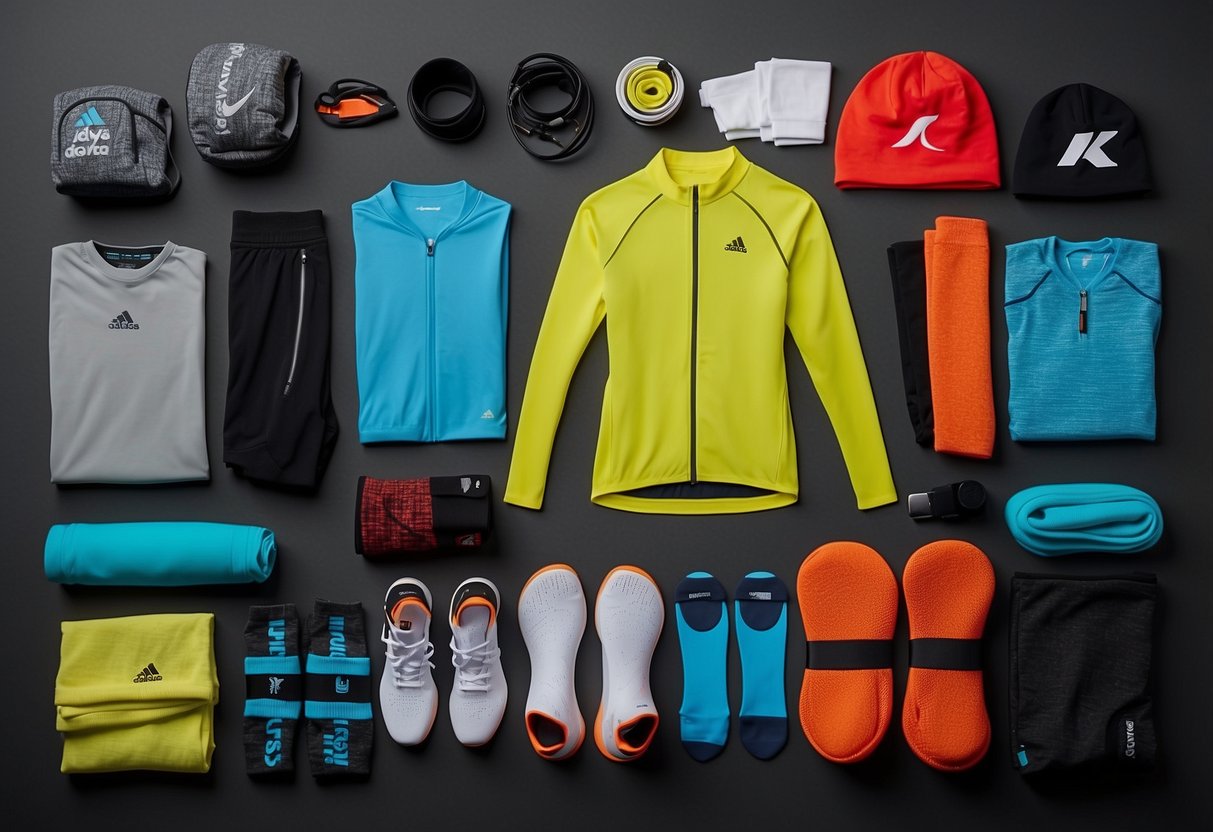
Practical Considerations for Athletes
Athletes need to consider the maintenance of compression gear and how it helps regulate body temperature and manage sweat during training and competitions.
Maintenance and Care of Compression Apparel
Proper care of compression gear is essential to ensure its longevity and effectiveness. Athletes should follow the manufacturer’s washing instructions, typically recommending a gentle cycle with cold water and air drying. Avoid using bleach or fabric softeners as they can degrade the material.
It’s crucial to store compression apparel in a cool, dry place to prevent mold and mildew. Regular inspection for tears or worn-out areas is also advisable, as they can compromise the gear’s functionality. Athletes might consider having multiple sets of gear if they train frequently, allowing for proper rotation and care.
Regulating Temperature and Managing Sweat
Compression gear plays a significant role in temperature regulation and sweat management. These garments are designed to wick sweat away from the body, keeping the athlete dry and comfortable during intense physical activity. This moisture-wicking property helps in preventing chafing and skin irritation.
During colder conditions, compression apparel can provide an additional layer of insulation, helping to retain body heat. Conversely, in warmer environments, the breathable material aids in cooling the body by facilitating efficient airflow. Athletes should choose gear appropriate for their sport and environmental conditions to maximize these benefits.
Incorporating Compression Gear into Training Regimes
Incorporating compression gear into training can enhance performance and aid in recovery. Compression garments, such as sleeves and leggings, can be worn during workouts to provide muscle support. This helps in reducing muscle vibrations and fatigue.
Athletes often prepare for rigorous exercises by wearing compression gear. These garments aid in maintaining optimal muscle temperature, potentially improving endurance. The snug fit promotes efficient blood flow, preparing the body for intense physical activity.
Post-exercise, compression gear can play a vital role in recovery. By improving circulation, these garments help in flushing out metabolic waste products, reducing swelling, and speeding up muscle repair. This can result in a shorter recovery time between workouts.
Compression wear is also beneficial for maintaining a range of motion during training. The flexible material allows athletes to move freely without restriction, ensuring that their movements remain natural and effective.
Choosing the right compression gear involves considering the type of activity and required support. It’s important to select items that fit well and provide the desired level of compression, balancing comfort and performance.
Incorporating these garments into both the training and recovery phases can lead to more efficient workouts and better overall athletic performance.
Beyond Performance: Health and Medical Benefits
Compression gear offers more than athletic benefits. It can significantly impact health by aiding circulatory and vascular health and assisting in medical conditions and post-surgery recovery, promoting quicker and more efficient healing.
Aiding Circulatory and Vascular Health
By applying consistent pressure to the limbs, compression garments improve blood flow. This is particularly beneficial for individuals with poor circulation or those at risk of vascular issues such as varicose veins. Increased blood flow helps prevent blood pooling and swelling in the legs, reducing the risk of complications like deep vein thrombosis (DVT).
Improved circulation also supports muscle recovery by facilitating the removal of metabolic waste products. This encourages the delivery of oxygen and nutrients to fatigued muscles, aiding in quicker regeneration. Thus, compression gear is not only useful for athletes but also for individuals facing circulatory health challenges.
Use in Medical Conditions and Post-Surgery Recovery
Compression garments are frequently used in medical settings to manage various conditions. For those with chronic venous insufficiency, compression sleeves or socks can alleviate symptoms by supporting vein function. For individuals recovering from surgery, compression garments help reduce swelling, bruising, and the risk of developing postoperative blood clots.
Patients with lymphedema, a condition involving fluid retention and swelling, also benefit from compression therapy. The pressure provided by the garments can help stimulate lymphatic fluid movement, reducing swelling and discomfort. By stabilizing affected areas, compression gear can facilitate a smoother and faster recovery process for various medical conditions.



